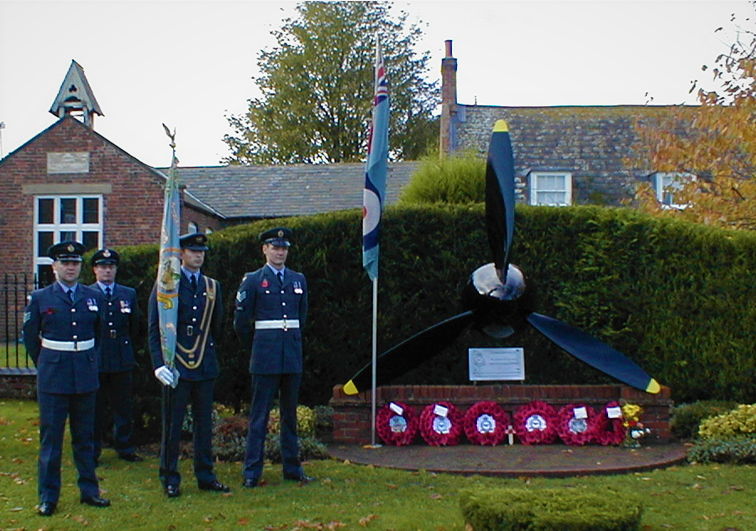
In 2022, Bardney Group Parish Council submitted an application to Historic England to formally list the IX (Bomber) Squadron RAF War Memorial in the Village of Bardney. Unfortunately, due to the recent history and relocation of the structure, the listing application was unsuccessful at this time. Perhaps when 50 or more years have passed it may have more chance of being formally recognised for its evident significance and historic value.
In the meantime, in agreement with IX (B) Squadron Association, we have created this webpage as a digital archive of the history of the memorial in the hope to preserve this information for future generations.
Historic Interest
The IX Squadron is the oldest dedicated Bomber Squadron of the Royal Air Force. In 1943, the Squadron moved to Bardney and took part in Bomber Command’s strategic offensive against German targets and were one of only two Avro Lancaster units specializing in heavy precision bombing. Squadron crews also took part in the successful mission to sink the German battleship Tirpitz in November 1944.
During the 27 months that RAF Bardney was operational more than 452 IX Squadron aircrew paid the ultimate sacrifice and for a long time, no memorial was in place for those who lost their lives.
In June 1976, members who served on the Squadron formed The IX Squadron Association with Jim Brookbank as Chairman. The original members included Norman Sirman, Norman Wells, George Pocock and Ron Goebel (Ron was the bomb aimer in the crew whose wireless operator George Thompson was posthumously awarded the VC on New Year’s Day 1945). After a lot of hard work by all involved and in cooperation with Bardney Parish Council, the memorial they wanted to honor the lives of all those lost became a reality.
Ron Goebel who had trained as an architect after the war volunteered to design the memorial. The design was to incorporate an original Lancaster propeller and through various connections, Ron Williams at British Aerospace Hatfield agreed to supply a Lancaster propeller and a stand for the memorial. Rather uniquely, an unused pristine Lancaster Propeller that had been in storage for more than 30 years would become the centerpiece of the memorial.
Invitations for the unveiling of the memorial was advertised nationally and the ceremony which took place on Sunday 19th October 1980 was attended by more than 300 people, including those from Australia, USA and Norway. The ceremony included fly pasts by the BBMF Lancaster PA474 as well as four other aircraft.
Two plaques would be used on the memorial, one to honour IX Squadron RAF losses in WW2 and the other to honour heroes from the Norwegian Resistance.
Present at the unveiling was two former members of the Norwegian Resistance, a gentleman named Egil Linberg, a wireless operator who sent secret messages back to the UK about the Tirpitz. The other, Lars Thoring, the Tromso Town Clerk, photographer and former leader of the Norwegian Resistance underground group. His codename was “Scorpion”. During the attack on Tirpitz on 12 November 1944, Lars Thoring climbed up on an observation platform to get a better view, until ordered down by a German officer.
The Norwegians donated a plaque inscribed “Scorpion” Kafjord which was first sent to the famous Aviation Historian and Author Alan Cooper before sending it on to Bardney just in time for it to be mounted on the memorial.
On 14 April 1993, Roger Audis held a ‘50 Years to the Day’ event to mark exactly 50 years to the day that IX(B) Squadron arrived at RAF Bardney and rededicated the memorial after being relocated a short distance. More than 400 people attended and considered it one of the best RAF memorials in the Bomber County of Lincolnshire.
